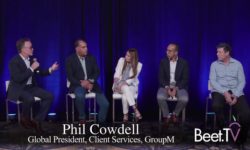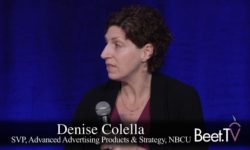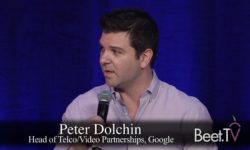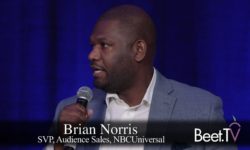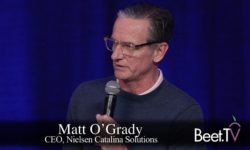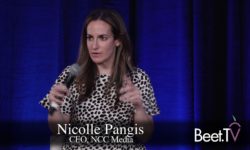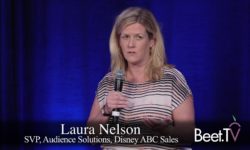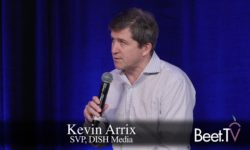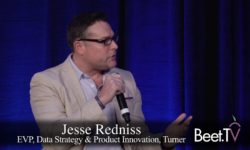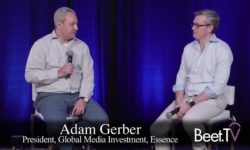SAN JUAN — Ad spending on over-the-top (OTT) TV was expected to increase 40% to $2 billion in 2018, with addressable TV spend reaching $800 million, according to Magna.
That means spending on addressable TV – with which buyers can use advanced data and return path to more precisely target viewers and households – would represent only around 1.1% of total US TV ad spend.
What could draw more spending? For one, we know that US OTT device penetration is high – but also that much consumption through those is devices is of ad-free, subscription VOD.
Furthermore, the Beet Retreat heard many views about the importance of scale, with claims that ” about 15% of advertisers are using advanced TV, (but) 50% are sitting on the sidelines“, worries that many advertisers are still just experimenting and a call for more inventory to be given to addressable TV.
In this panel, several executives further debated how addressable can hit scale.
Scale is an organisational challenge
Even the largest of media companies is grappling with how to transform their ad sales initiatives…
Laura Nelson, SVP, Audience Solutions, Disney Advertising Sales:
“The whole reason that you’re seeing all this consolidation in the media industry is to get scale, and to get reach. Other companies have already done it. We’re doing it at our point.
“We had all these individual businesses that had different types of scale. In the linear side, it worked – but now we have to spend millions of dollars … to find the right partners to be able to activate the inventory and look at it holistically.
Competing with SVOD’s scale
Years ago, few may have predicted that paid video over the internet would be as big as it has become. But the rise of Netflix and Amazon now presents a challenge to media companies. Panelists discussed whether those players would emerge in to TV ad sales, and how TV companies must team to compete…
Laura Nelson, SVP, Audience Solutions, Disney Advertising Sales:
“If you think of our competitors particularly in the space like Netflix and Amazon. Netflix has scale, but are they going to be able to sustain what they’re doing with one revenue stream (subscription)?
“Amazon, on the other hand, is a whole other thing. Right? They have this whole base. They have multiple revenue streams coming in, and then they’re going to invest in content. To me, they feel like our biggest competitor from a scale and a reach perspective.”
Tony Yi, GM, Business Development, Amobee:
“They’re going to invest, between Netflix and Amazon, over $20 billion next year, which is larger than most of the TV ad revenues of any single companies in this room. They own the entire consumer funnel.
“We in the TV industry … need better consortiums, better marketplaces, better easier ways for the buy side to buy in a more frictionless manner. I think we’re seeing that right now with EGTA, with EVX, with RTLs, TV Marketplace, with OpenAP. We see a lot of starts to that solution.”
Buyers want more, better – and cheaper
The internal structure of the relationship between advertiser brands and their buying agencies influences the kind of ad inventory being chased, which may ultimately impact outcomes…
David Hohman, EVP & Managing Director, Nielsen:
“Right now, most of the media agencies are winning business on a savings guarantee, which means that they have to show the advertiser that they’re spending less money. They want reductions every single year.
“So, there’s this pressure on agencies who are trying to innovate, who are trying to do the right things for their clients, and in the end of the day, they’re chasing low CPMs.”
Finite media time impacts scale
The entire media universe is growing – but consumers still only have 24 hours in a given day. Panel host Ashley J. Swartz of Furious Corp cited eMarketer research showing 2018 consumer media time went from 12 hours and 7 minutes to 12 hours and 8 minutes a day. She asked if consumers’ capacity to consume content naturally limits scale…
Tony Yi, GM, Business Development, Amobee:
“The latest stats on Facebook are that less than 20% of their audience will view a video ad for more than three seconds. That’s not going to move the needle.
“I definitely think there’s a capacity issue – the human conscience capacity issue.”
This video was produced in San Juan, Puerto Rico at the Beet.TV executive retreat. Please find more videos from the series on this page.
The Beet Retreat was presented by NCC along with Amobee, Dish Media, Oath and Google.







